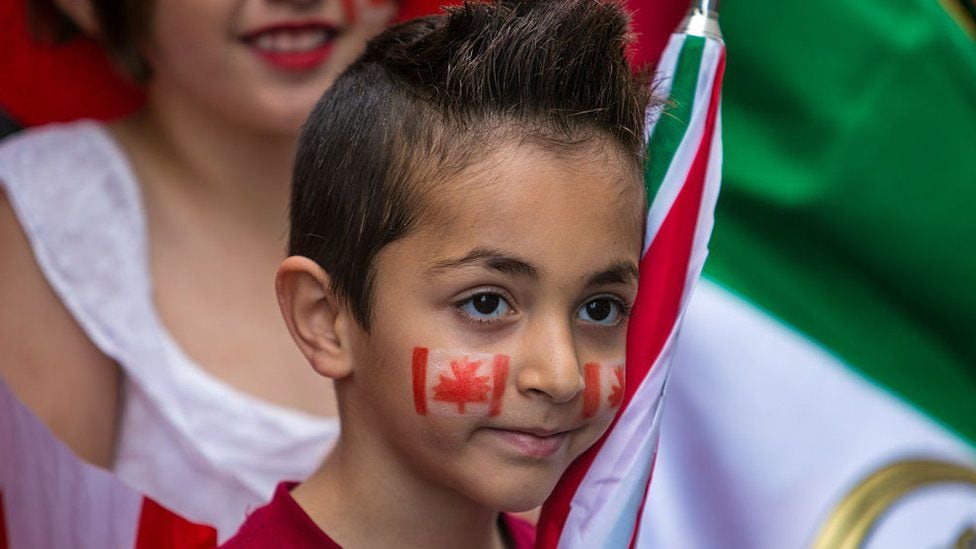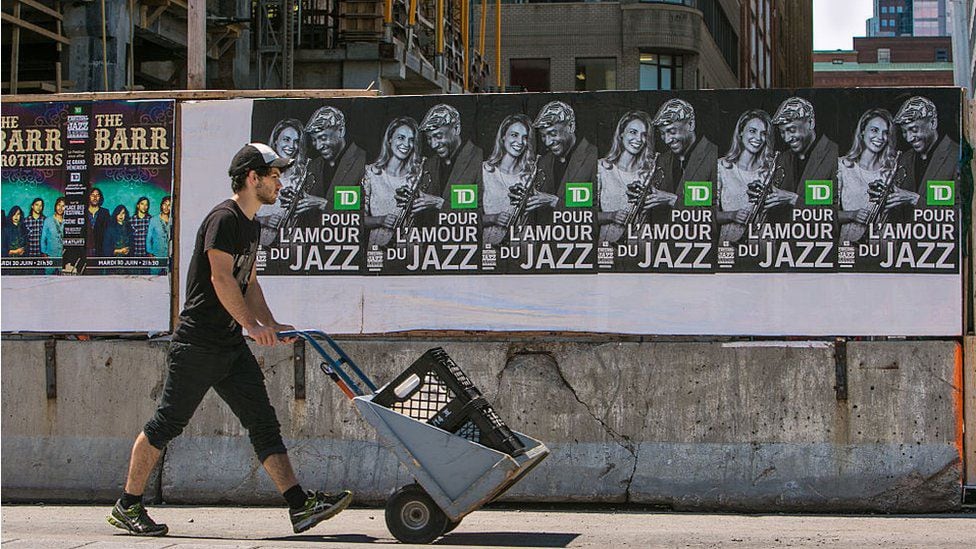Canada is betting on immigration to fill the void left in its economy by the aging of the “baby boom” generation. But not everyone agrees with the arrival of so many foreigners.
LOOK: Canada: shooting near a school leaves four injured
In early November, the federal government announced an aggressive plan to welcome 500,000 immigrants a year by 2025, for a total of 1.5 million new migrants.
With this plan, Canada would receive eight times the number of permanent residents each year -by population- than the United Kingdom and four times more than its neighbor to the south, the United States.
A recent survey, however, shows that it also there is anxiety to welcome so many newcomers.
Canada bets big
For many years, Canada has tried to attract permanent residents – immigrants who have the right to stay in the country indefinitely without being citizens – to keep the population and economy growing.
Last year, the country hosted 405,000 permanent residentsthe highest figure in its history.
The reasons have to do, in a way, with simple mathematics. Like many Western nations, Canada has an aging population and a low birth rate. This means that if the country wants to grow, it will have to bring immigrants.
Immigration adds to the growth of the active population and by 2032 it is expected to also contribute to the increase in the country’s population, according to a government press release.
A unique place in the world
Nowadays, one in four Canadians has come to the country as an immigrant, the highest figure among the G7 nations. In the United States, known as “the melting pot of the world,” only 14% are immigrants.
Geoffrey Cameron, a political scientist at McMaster University, believes that while many countries, such as Canada, are facing lower birth rates and an aging population, the success of any immigration system depends on popular support.
“The limiting factor for most countries is public opinion,” he says.
In the US, where the number of immigrants entering the country through the southern border has reached an all-time high, there is widespread concern about having more immigrants than jobs.

In Canada, on the other hand, there has historically been very high support for immigration.
“I think part of the reason is that there is a degree of public confidence that immigration to Canada is well managed by the government and is also managed in a way that serves the interests of the country,” Cameron explains.
That does not mean that there are no problems with immigration.
In recent years, the influx of immigrants at the US border has caused some controversyand the emergence of a new right-wing party in 2018, the People’s Party of Canada, kept the issue in the national conversation in the run-up to the 2019 federal election.
Certain parts of Canada also have different views on immigration.
When the government announced its aggressive targets of up to 500,000 new immigrants a year (25% more than in 2021), the province of Quebec, which can set its own immigration limits, made it clear that would not accept more than 50,000 a year. This would mean that Quebec, which has 23% of the country’s population, would only welcome 10% of foreigners.
The Prime Minister of Quebec, François Legault, stated that he is concerned that more immigrants will weaken the French language in the province.
“Already with 50,000 it is difficult to stop the decline of the French,” he said.
And while it’s true that Canada may have more room to grow, some places feel the pressure more. Large cities such as Toronto and Vancouver -where about 10% of the population currently lives- have affordable housing crisis.
In a survey conducted by Leger and the Association for Canadian Studies among 1,537 Canadians, three in four said they were somewhat or very concerned about the effect the new plan would have on housing and social services. Almost half (49%) argued that the targets were too high, while 31% argued that it was the correct number.

The Canadian Approach
Another way in which Canada is unique in the Western world is its emphasis on economic immigration: about half of permanent residents are accepted for their skills, not for family reunification. The government expects to reach 60% by 2025.
This is partly due to how the Canadian system was designed, Cameron explains. In the 1960s, Canada moved from a quota system to a points-based system giving preference to highly-skilled immigrants that would contribute to Canada’s economy.
“The same principle guides the system today,” the expert told the BBC.
In the United Kingdom, slightly more than one in four permanent residents is accepted economically. In the United States, only 20% of green cards are issued for that reason. Both countries have indicated that they hope to increase the proportion of economic immigrants, only that most economic immigrants must be sponsored by their employers.
In Canada, a job offer can count toward your point total, but it doesn’t have to.

Can Canada meet its targets?
Canada not only hosts more skilled immigrants than other major nations, it is also one of the leading countries in terms of refugee resettlementby accepting 20,428 refugees in 2021.
Although the country has set ambitious goals for the future, history has shown that it does not always meet its own expectations. In 2021, Canada had a goal of resettling some 59,000 refugees, almost three times as many as the country took in.
In an interview with Canadian public broadcaster CBC, Immigration Minister Sean Fraser said the lag was largely due to covid-related border closures, both in Canada and around the world.
By 2023, Canada aims to help resettle 76,000 refugees.
Source: Elcomercio
I am Jack Morton and I work in 24 News Recorder. I mostly cover world news and I have also authored 24 news recorder. I find this work highly interesting and it allows me to keep up with current events happening around the world.

:quality(75)/cloudfront-us-east-1.images.arcpublishing.com/elcomercio/GE4TAMRNGEYS2MRTKQYDAORRHE.jpg)

:quality(75)/cloudfront-us-east-1.images.arcpublishing.com/elcomercio/VGXELGHW65ALRPIH3JZBJFURMU.jpg)

:quality(75)/cloudfront-us-east-1.images.arcpublishing.com/elcomercio/YZRU25P7TNGKZIHA7E75XX55PI.jpg)

